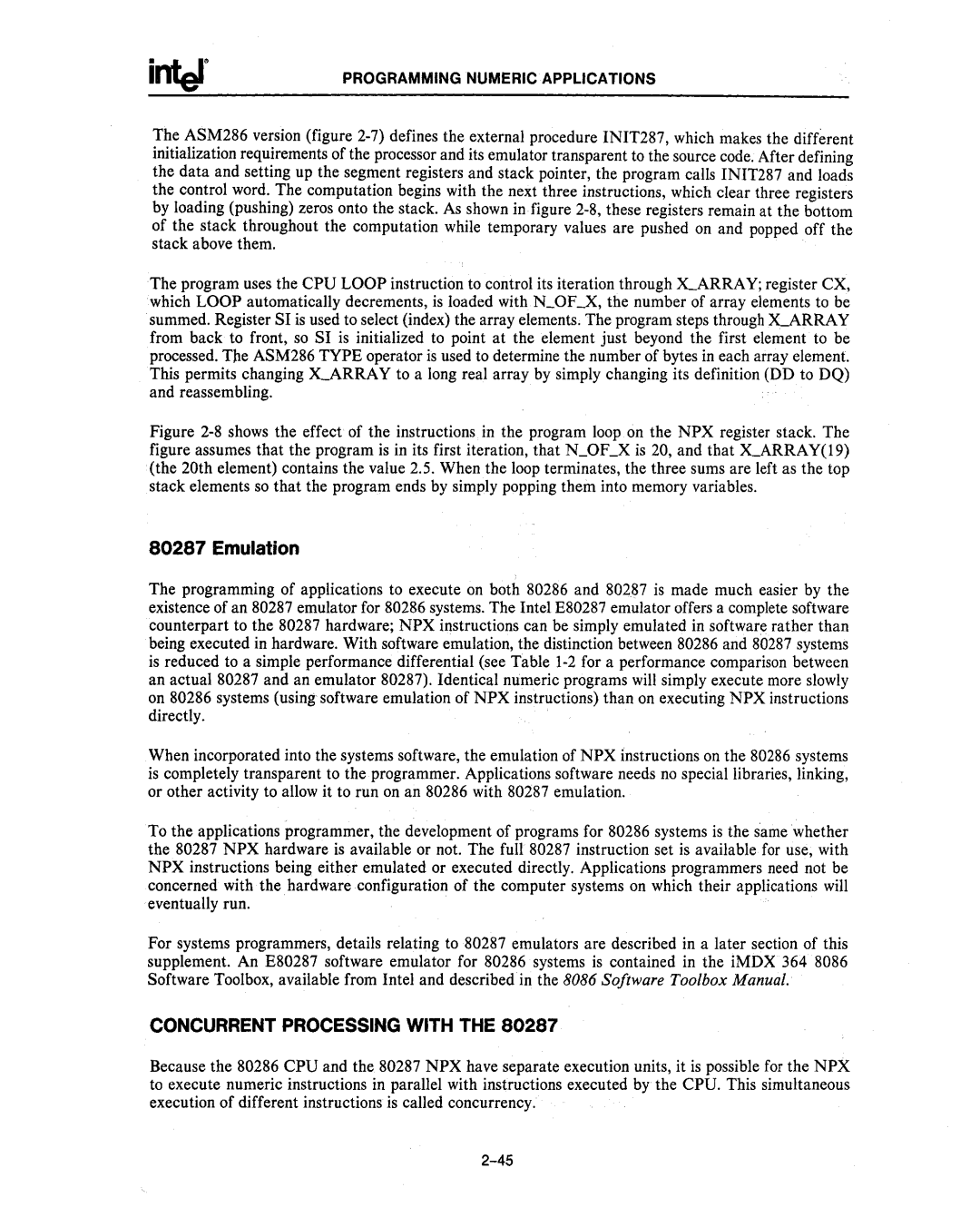
PROGRAMMING NUMERIC APPLICATIONS
The ASM286 version (figure
stack above them. | ' |
The program uses the CPU LOOP instruction to control its iteration through )CARRAY; register CX, which LOOP automatically decrements, is loaded with N_OF.J(, the number of array elements to be summed. Register SI is used to select (index) the array elements. The program steps through )CARRAY from back to front, so SI is initialized to point at the element just beyond the first element to be processed. The ASM286 TYPE operator is used to determine the number of bytes in each array element. This permits changing )CARRAY to a long real array by simply changing its definition (DD to DQ) and reassembling.
Figure 2-8 shows the effect of the instructions in the program loop. on the NPX register stack. The figure assumes that the program is in its first iteration, that N_OF.J( is 20, and that }CARRAY(19) (the 20th element) contains the value 2.5. When the loop terminates, the three sums are left as the top stack elements so that the program ends by simply popping them into memory variables.
80287 Emulation
I
The programming of applications to execute on both 80286 and 802~7 is made much easier by the existence of an 80287 emulator for 80286 systems. The Intel E80287 emulator offers a complete software counterpart to the 80287 hardware; NPX instructions can be simply emulated in softwar~ rather than being executed in hardware. With software emulation, the distinction between 80286 arid 80287 systems is reduced to a simple performance differential (see Table
directly. | ' |
When incorporated into the systems software, the emulation of NPX instructions on the 80286 systems is completely transparent to the programmer. Applications software needs no special libraries, linking, or other activity to allow it to run on an 80286 with 80287 emulation.
To the applications programmer, the development of programs for 80286 systems is the same ~hether the 80287 NPX hardware is available or not. The full 80287 instruction set is available for use, with NPX instructions being either emulated or executed directly. Applications programmers need not be concerned with the hardware configuration of the computer systems on which their applications will eventually run.
For systems programmers, details relating to 80287 emulators are described in a later section of this supplement. An E80287 software emulator for 80286 systems is contained in the iMDX 364 8086 Software Toolbox, available from Intel and described in the 8086 Software Toolbox Manual.
CONCURRENT PROCESSING WITH THE 80287
Because the 80286 CPU and the 80287 NPX have separate execution units, it is possible for the NPX to execute numeric instructions in parallel with instructions executed by the CPU. This simultaneous execution of different instructions is called concurrency.
